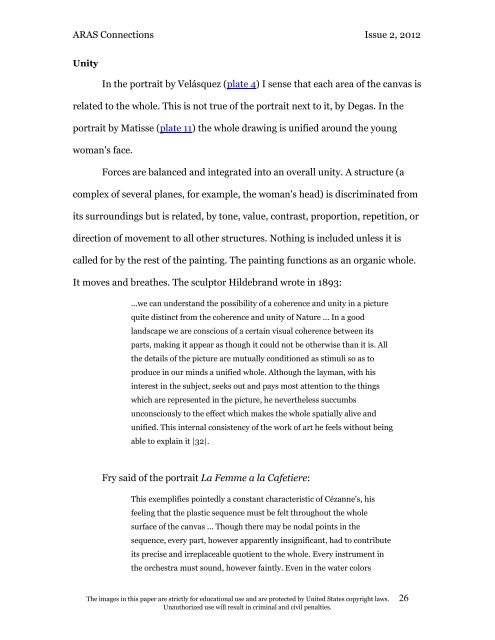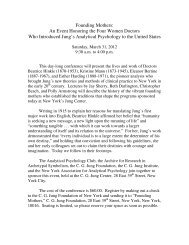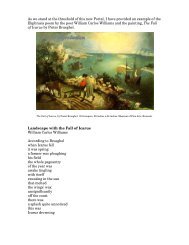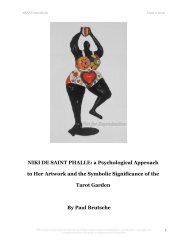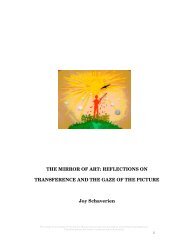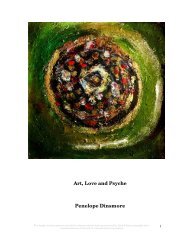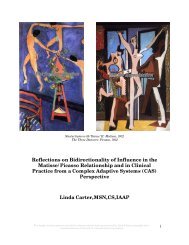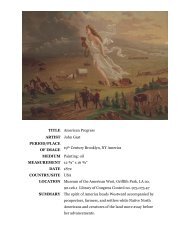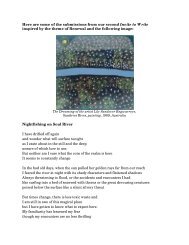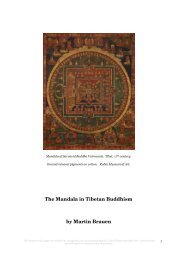Pictorial Space throughout Art History: Cézanne and ... - ARAS
Pictorial Space throughout Art History: Cézanne and ... - ARAS
Pictorial Space throughout Art History: Cézanne and ... - ARAS
Create successful ePaper yourself
Turn your PDF publications into a flip-book with our unique Google optimized e-Paper software.
<strong>ARAS</strong> Connections Issue 2, 2012<br />
Unity<br />
In the portrait by Velásquez (plate 4) I sense that each area of the canvas is<br />
related to the whole. This is not true of the portrait next to it, by Degas. In the<br />
portrait by Matisse (plate 11) the whole drawing is unified around the young<br />
woman's face.<br />
Forces are balanced <strong>and</strong> integrated into an overall unity. A structure (a<br />
complex of several planes, for example, the woman's head) is discriminated from<br />
its surroundings but is related, by tone, value, contrast, proportion, repetition, or<br />
direction of movement to all other structures. Nothing is included unless it is<br />
called for by the rest of the painting. The painting functions as an organic whole.<br />
It moves <strong>and</strong> breathes. The sculptor Hildebr<strong>and</strong> wrote in 1893:<br />
...we can underst<strong>and</strong> the possibility of a coherence <strong>and</strong> unity in a picture<br />
quite distinct from the coherence <strong>and</strong> unity of Nature ... In a good<br />
l<strong>and</strong>scape we are conscious of a certain visual coherence between its<br />
parts, making it appear as though it could not be otherwise than it is. All<br />
the details of the picture are mutually conditioned as stimuli so as to<br />
produce in our minds a unified whole. Although the layman, with his<br />
interest in the subject, seeks out <strong>and</strong> pays most attention to the things<br />
which are represented in the picture, he nevertheless succumbs<br />
unconsciously to the effect which makes the whole spatially alive <strong>and</strong><br />
unified. This internal consistency of the work of art he feels without being<br />
able to explain it |32|.<br />
Fry said of the portrait La Femme a la Cafetiere:<br />
This exemplifies pointedly a constant characteristic of <strong>Cézanne</strong>'s, his<br />
feeling that the plastic sequence must be felt <strong>throughout</strong> the whole<br />
surface of the canvas ... Though there may be nodal points in the<br />
sequence, every part, however apparently insignificant, had to contribute<br />
its precise <strong>and</strong> irreplaceable quotient to the whole. Every instrument in<br />
the orchestra must sound, however faintly. Even in the water colors<br />
The images in this paper are strictly for educational use <strong>and</strong> are protected by United States copyright laws. 26<br />
Unauthorized use will result in criminal <strong>and</strong> civil penalties.


